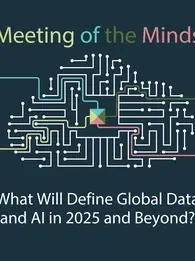In today’s data-driven world, real-time analytics has become a cornerstone for businesses seeking to make smarter, faster decisions. From enhancing user experiences to enabling continuous intelligence, the ability to process data in real-time is transforming industries. Yet, challenges such as legacy systems and the demand for innovative data management approaches persist.
This episode explores the evolution of real-time analytics and its crucial role in modern data processing. We delve into how technology is reshaping the way businesses interact with data and the importance of user-centric design in creating powerful data applications.
Joining Christina Stathopoulos, Founder of Dare to Data, is Rahul Rastogi, Chief Innovation Officer at SingleStore. Together, they discuss the necessity of real-time data in today’s fast-paced business environment, tackle the challenges organizations face in adapting to this shift, and highlight how data serves as the foundation for AI-driven innovation.
Don’t miss this insightful discussion packed with practical strategies and forward-looking ideas!
Key Takeaways
- Real-time analytics has evolved from a luxury to a necessity.
- Streaming technologies like Kafka and Spark have revolutionized data processing.
- Legacy systems are often monolithic and ill-suited for real-time analytics.
- Modern data platforms enable easier data management and integration.
- Continuous intelligence requires a solid analytics foundation.
- User experience is critical for the adoption of data applications.
- Organizations must treat data as a valuable asset.
- Data governance and quality are essential for effective analytics.
- The separation of compute from storage enhances scalability.
- Real-time processing with low latency improves user satisfaction.
Chapters
00:00 - Introduction to Real-Time Analytics
06:14 - The Evolution of Technology in Data Processing
10:09 - Challenges of Legacy Systems
14:23 - Innovative Approaches to Data Management
18:06 - Building a Foundation for AI Innovations
21:27 - User Experience in Data Applications












Comments ( 1 )